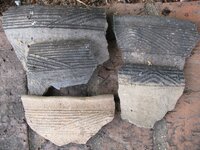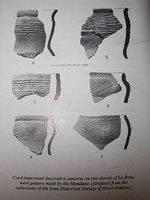larson1951
Silver Member
I see this pattern on pottery rims over and over
I have buckets and boxes of pottery rim pieces and many of them have this same design on them
I think it represents the rainbow
I now thank you all in advance for your opinion, one highly respected friend has an idea this could be water (waves)
I have buckets and boxes of pottery rim pieces and many of them have this same design on them
I think it represents the rainbow
I now thank you all in advance for your opinion, one highly respected friend has an idea this could be water (waves)
Attachments
Upvote
0








